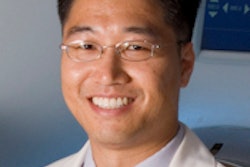A hidden culture of isolationism rules too many Canadian radiology training facilities, according to a new study in the European Journal of Radiology. Researchers found that four of the five academic centers surveyed were plagued by attitudes that negatively affected resident instruction.
Negative attitudes ranged from stereotypes that radiologists were unfriendly physicians working in dark rooms all day to a lack of communication between residents and their instructors. What's more, several of the facilities surveyed seemed indifferent toward teaching.
The study began in 2006 as a collaboration aimed at optimizing medical education through curriculum improvement. The project, which includes detailed records and interviews with trainees, came to encompass five institutions across Canada, adopting as its principal goal the identification and analysis of hidden curricula in medical training programs (EJR, May 2013, Vol. 82:5, pp. 883-887).
Negativity is powerful
The "Future of Medical Education in Canada," a report from the Association of Faculties of Medicine of Canada, defines a hidden curriculum as " 'a set of influences that function at the level of organizational structure and culture,' affecting the nature of learning, professional interactions, and clinical practice," wrote study author Teresa Van Deven, PhD, from the Schulich School of Medicine and Dentistry, and colleagues.
Hidden misconceptions about radiology that could hurt the profession became evident right away in the course of the study, the authors wrote. One of the interviewees, Ellen, recounts the responses that followed her announcement to pursue radiology.
"You're going to be in a dark room!" she said. "You're never going to see patients! You'll only ever work for yourself! How boring would that be? Would you ever really impact patients' lives?"
At a time of increasing demand for radiologists, this kind of misguided story could hinder radiology departments' efforts to recruit talented physicians, the group wrote.
In-depth analysis, interviews
The researchers used a qualitative case study methodology to enable in-depth analysis of multiple data sources, including official documents, surveys, observations, and interviews within the enterprise.
A total of 48 interviews were conducted with undergraduate and postgraduate students, radiologists, imaging scientists, residents, faculty, and administrators. The data were analyzed by the core research team and by external examiners.
The results showed that a hidden curriculum of isolation prevailed in four of the five major centers studied.
"In other words, the hidden curriculum reinforced the image of the radiologist as a doctor who works alone in a dark room, engaging in minimal professional communication or collaboration," the authors wrote.
The isolationism was evident in the radiologists' remarks that they lacked guidance and mentors both within and outside of their departments as they learned the practice of radiology. In addition, there was a lack of protected, dedicated time for teaching.
Positive attitudes in 1 center
"The fifth program exhibited a hidden curriculum of collaboration and support, although even in this setting the faculty received mixed messages about the value of teaching within their department," the authors wrote.
Residents training in the program ruled by a positive culture met with the program director every six months to discuss their progress and goals. Junior residents utilized the knowledge of senior residents, and senior residents looked to young faculty to answer their questions.
"Residents and faculty alike spoke of the importance of providing and receiving emotional support as well as technical support from their colleagues and mentors," they wrote.
Residents who were not progressing were assigned to a mentor who would meet with them every other week or more to review their learning progress, and the details of the mentoring relationship were left up to the individual radiologist, with strict confidentiality maintained.
High volumes stress staff
In radiology facilities today, the increasing number of requests for imaging studies has strained the ability of staff to devote time to mentoring, the group wrote. All faculty members interviewed for the study reported they had little time in their workday to allocate to teaching.
The comments suggested that learning was occurring despite a culture of indifference toward teaching. The lack of time devoted to preparing to teach "sends the message that the program is not committed to providing high-quality training," the authors wrote.
One doctor said his experience has taught him that radiology departments can either be isolated and dead -- or the center of a medical facility. At his medical school, radiology was a series of closed doors, behind which reports were being generated that people in the clinical wards would receive two days later, for a completely isolating experience, the physician recalled.
"Then when I did my internship, I went to a hospital where it was the complete opposite; the whole hub of the department was in radiology, and so there was a lot of teaching going on there," the authors wrote.
The focus in the facilities was on learning to read images, but there was little discussion about effectively communicating the findings to other physicians and patients.
"Yet the majority of the problems that occur in radiology departments are not related to deficient technical skills, rather, they are most commonly related to poor communication," they wrote.
Many radiology departments come equipped with "a big bad reputation that radiologists sit in dark rooms all day drinking coffee and reading x-rays," a resident told the authors. Other clinicians hated to go there because of the negative reception they received.
"They're always going to be mean, they're always going to refuse to do your tests, they're not going to tell us what we really need to know," the interviewee reported.
Building a better place
The notion of the radiology department as a crossroads and central hub of the healthcare facility presents opportunities to reorganize institutional values in favor of the specialty, the study team wrote.
"The implied messages about professionalism transmitted to radiology residents provide the foundation for the future of the profession," the group wrote. "If there is a desire for a culture of support and collaboration that positions radiology at the crossroads of medicine, then focused efforts must be directed at building the type of culture that overtly models the vision it seeks to achieve."
To do this, learners must interact and keep as their role models individuals who embody this vision and conduct themselves in a way that promotes it.
"The first step toward that goal is to articulate and make visible the learning architecture of our own 'intellectual homes'; doing so sends clear signals about the value of learning and sets the stage for building new and productive relationships around learning," they wrote.



















